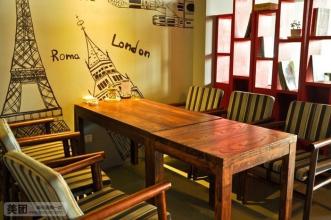Full-bodied jasmine fragrance of Ethiopian sun Yega Shifeiwaka coffee flavor manor introduction
In February 1977, Lieutenant Colonel Mengistu Haile Mariam launched a military coup and became chairman of the Provisional Military Administrative Council and head of state. In 1979, the "Ethiopian Working People's Party Organizational Committee" was established with military personnel as the main body, and a one-party system was implemented. In 1984, the "Ethiopian Workers 'Party" was formed according to the Soviet Communist Party model. In September 1987, Mengistu announced the dissolution of the "Provisional Military Administrative Council", the end of military rule, the establishment of the "People's Democratic Republic of Ethiopia", and the establishment of a new parliament, Mengistu as president and head of government in December 1994, the formulation of the "Constitution of the Federal Democratic Republic of Ethiopia." The constitution stipulates that Ethiopia will adopt a federal system and a parliamentary cabinet system after the election, with a term of office of five years. National elections were held in May 1995. On August 22, the Federal Democratic Republic of Ethiopia was established. Meles became Prime Minister as Chairman of the Majority Party in the House of People's Representatives. On May 14, 2000, Ethiopia held a national election, in which the Ethiopian Revolutionary Front defeated other opposition parties by an absolute majority to retain power. In October, a new federal parliament and government were established. The presidents of both houses and Prime Minister Meles were elected for re-election. The original cabinet was also retained with the approval of the parliament. In October 2001, Mei adjusted the government structure and reshuffled the cabinet, adding the Ministry of Youth, Sports and Culture and the Ministry of Taxation, and established a new cabinet composed of 18 ministers. Ethiopia is rectangular in shape, with a ratio of length to width of 3:2. From top to bottom by green, yellow, red three parallel equal horizontal rectangle composition, flag surface middle has the national emblem pattern. Since the late 19th century, Ethiopia has adopted a green, yellow and red striped flag. Ethiopia was the first African country in modern history to join the ranks of free peoples.
Ethiopia's Yirgacheffe coffee is petite, but gentle and sweet. As the home of coffee, Ethiopia's millennia of growing and processing traditions have resulted in high-quality washed Arabica beans. Light baked with unique lemon, floral and honey sweet aromas, soft fruit acids and citrus notes, fresh and bright taste. No milk, no sugar, let the rich texture and unique soft floral brush your taste buds, leaving endless aftertaste…
Yegashefi is a small town, 700- 21,000 meters above sea level, synonymous with Ethiopian fine coffee. It is a wetland since ancient times, and the old saying "Yirga" means "settle down" and "Cheffe" means "wetland". The way coffee is produced and the flavor is so prominent that Ethiopian coffee farmers compete to be proud of their coffee with Yegashfi flavor, which has become Africa's most famous coffee producing area.
At first, the coffee trees in Yegashefi were planted by European monks, but later by farmers or cooperatives. Yegashefi is actually formed by surrounding coffee communities or cooperatives, which generally include: Hafusa, Hama, and Biloa.
These mountain villages are foggy, spring all year round, cool but not hot in summer, rain but not damp in winter, and they breed unique regional flavors of citrus and flowers. Most coffee trees were planted in farmers 'backyards or mixed with other crops in the field. The coffee trees of Yeshifi were planted by European monks (a bit like Belgian monks growing wheat to brew beer), and later by farmers or cooperatives. Yerga Shefi is actually constructed by surrounding coffee communities or cooperatives, including Idido, Harfusa, Hama, and Biloa near Misty Valley, all washed, but a small number of unique beans are deliberately sunburned to enhance the charming fruity flavor and body. These mountain villages are foggy, spring all year round, cool but not hot in summer, rain but not damp in winter, and they have a unique regional flavor of citrus and flowers. Coffee trees are mostly planted in farmers 'backyards or mixed with other crops in the field. The yield per household is not much. It is a typical pastoral coffee. Yega Shefi award-winning beans almost come from the coffee villages and communities mentioned above.
The so-called "yejia sherry flavor" refers to rich jasmine flowers, lemon or lime acid aroma, as well as peach, almond sweet or tea aroma. And, this season, the blueberry flavor of dried snow is especially prominent. After grinding, the blueberry fragrance fills the house.

Important Notice :
前街咖啡 FrontStreet Coffee has moved to new addredd:
FrontStreet Coffee Address: 315,Donghua East Road,GuangZhou
Tel:020 38364473
- Prev

Introduction to Costa Rican Yersalo Coffee Flavor Manor with mild acidity and good sweetness
The seven provinces are: Alajuela Alajuela (central, northwest of San Jose), Catago Cartago (central, east of San Jose), Guanacaster Guanacaste (northwest), Eredia Heredia (central, north of San Jose), Limon Limn (east, along the Caribbean), Pentalenas Puntarenas (west, along the Pacific Ocean), San Jose San
- Next

Introduction to the characteristics of the light and fragrant El Salvador Himalayan coffee flavor manor
Salvadoran coffee ranks side by side with Mexico and Guatemala as the producers of Asa and Merdo, and is fighting for the top one or two places in China and the United States with other countries. The highlands of origin are large coffee beans of all sizes, which are fragrant and mild in taste. Like Guatemala and Costa Rica, coffee in El Salvador is graded according to altitude. The higher the altitude, the better the coffee.
Related
- Detailed explanation of Jadeite planting Land in Panamanian Jadeite Manor introduction to the grading system of Jadeite competitive bidding, Red bid, Green bid and Rose Summer
- Story of Coffee planting in Brenka region of Costa Rica Stonehenge Manor anaerobic heavy honey treatment of flavor mouth
- What's on the barrel of Blue Mountain Coffee beans?
- Can American coffee also pull flowers? How to use hot American style to pull out a good-looking pattern?
- Can you make a cold extract with coffee beans? What is the right proportion for cold-extracted coffee formula?
- Indonesian PWN Gold Mandrine Coffee Origin Features Flavor How to Chong? Mandolin coffee is American.
- A brief introduction to the flavor characteristics of Brazilian yellow bourbon coffee beans
- What is the effect of different water quality on the flavor of cold-extracted coffee? What kind of water is best for brewing coffee?
- Why do you think of Rose Summer whenever you mention Panamanian coffee?
- Introduction to the characteristics of authentic blue mountain coffee bean producing areas? What is the CIB Coffee Authority in Jamaica?

